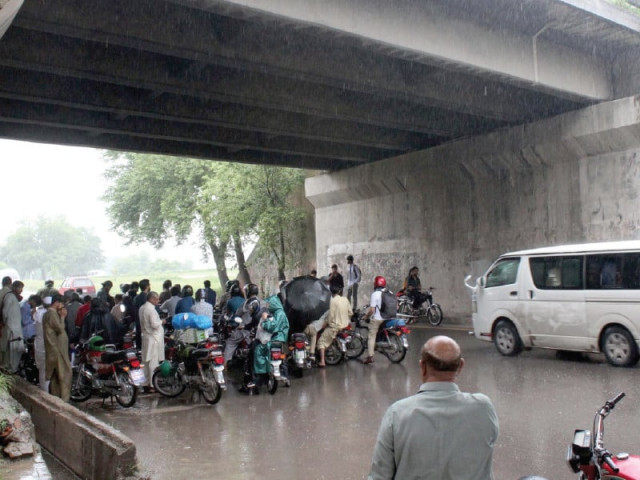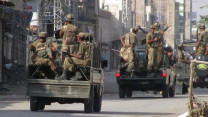Monsoon rains drench twin cities
Wreak havoc in low-lying areas, paralyse routine life

The twin cities of Rawalpindi and Islamabad have been severely impacted by three consecutive days of heavy monsoon rains, causing widespread disruption in low-lying areas.
Streets and major thoroughfares have turned into pools of stagnant water, severely hampering traffic flow and bringing social, commercial, and business activities to a standstill.
The persistent downpour has left vegetable and fruit markets in disarray, with mud covering the areas and the drainage system completely overwhelmed. Customers have been deterred from visiting the markets due to water accumulation on surrounding roads. In addition, power outages have plagued half the city, and the pressure of Sui gas has dropped significantly.
Landline phones are dead in many areas, while students struggle to reach schools as rain continues from morning to evening. Attendance in educational institutions has been low, and many offices report similar issues. The roofs of dilapidated houses have started leaking, adding to the woes of residents.
The city's 15 storm drains are flooded, and the Nullah Korang has reached dangerous levels due to the Rawal Dam's spillway being opened three times within the past week. The spillway's release has led to severe flooding in the River Soan, causing land erosion in nearby settlements. Areas such as Adiala village, Gorakhpur, and Kharakkan village are particularly affected, with water levels rising three to four feet in fields and on roads. Communication bridges have also been damaged.
Despite the havoc, the continuous rain has brought a pleasant change in the weather. The cool air has made air conditioners redundant, as fans now circulate cool breezes.
The water levels in the three dams that supply Rawalpindi and Islamabad have reached their maximum capacity. The spillway of Rawal Dam was opened for the third time on Friday, attracting local hobbyists and hunters who took advantage of the fish that had entered the drains. Despite a ban, many risked their lives to catch fish in the swollen waters.
The ample rainfall has filled the catchment areas of Rawal, Simli, and Khanpur dams, alleviating fears of a water crisis in the summer of 2025. According to Saleem Ashraf, Managing Director of the Water and Sewage Agency (WASA), the dams are now full. With the anticipated decrease in water consumption from September, and winter rains expected in December through March, the stored water should suffice to prevent any shortages until August 2025.
Ashraf noted that the ongoing torrential rain has brought over 50 mm of rainfall to the twin cities since morning. WASA is on high alert, with a rain emergency in place. All lfield staff leaves have been canceled, and personnel, along with heavy machinery, are on standby.
WASA spokesperson and director, Umar Farooq, reported that Golra recorded 43mm of rain, Syedpur55 mm, PMD58 mm, Shamsabad 53mm, and Kachhari 33mm. Nullah Leh is under constant monitoring, with water levels at 8 feet at Katariyan and 6 feet at Golmandi Bridge. WASA staff, equipped with heavy and light machinery, have been permanently stationed at all underpasses and are working in shifts to handle any emergency that may arise.



















COMMENTS
Comments are moderated and generally will be posted if they are on-topic and not abusive.
For more information, please see our Comments FAQ